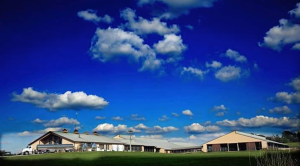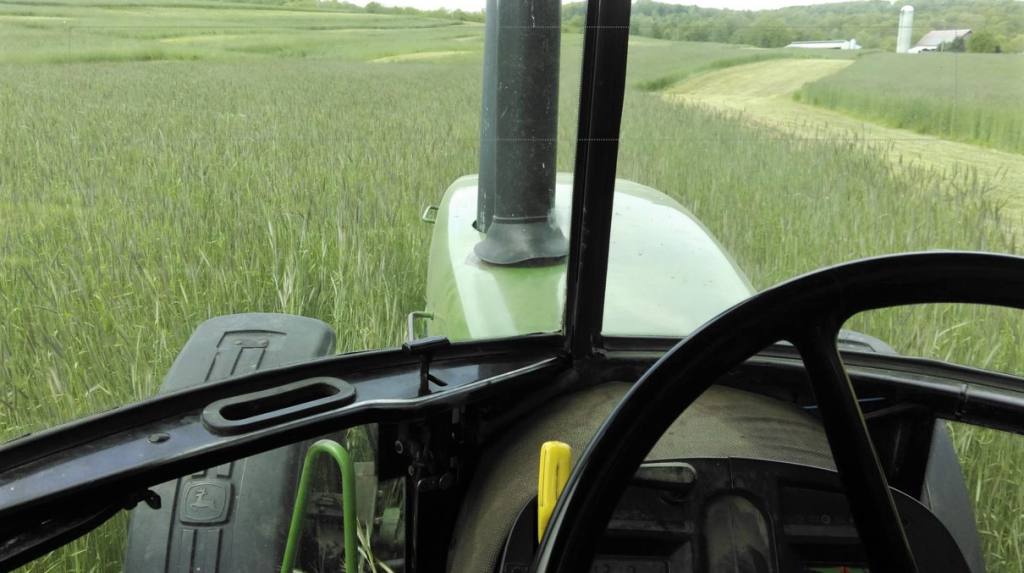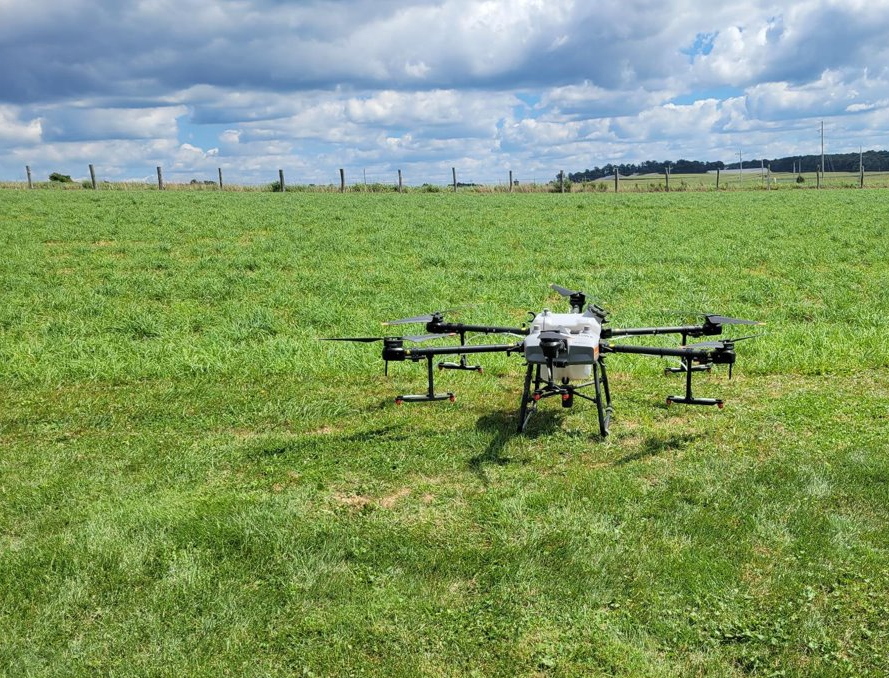
Shawn Saylor Was Interviewed in the New Episode of “Cow-Side Conversations”
In the Center for Dairy Excellence’s latest episode of the “Cow-Side Conversations” podcast, Shawn Saylor of Hillcrest Saylor Dairy Farms in Somerset County, Pennsylvania, discusses his unique, regenerative approach to caring for their 680-cow herd and 1,500 acres. Shawn shares which pieces of technology he has implemented on the cropping side and why other technologies have not been the right fit. He shares his experience with cover cropping, planting green, drone technology and auto steering with precision planting, while also describing the methane digester he designed himself and how certain climate-smart strategies can equate to increased profitability on dairy farms.
Shawn opens the podcast by describing their dairy operation and unique growing season. Shawn is the fourth generation on the farm, and he has followed a no-till approach to cropping for several years. He has implemented precision ag technology to help with that and also has a methane digester. The farm is located in the mountains of Somerset County, and Shawn says they have two weeks less of a growing season due to the elevation. In the spring, he aims to start planting corn in early May, and during harvesting season, he tries to start chopping corn around mid-September.
Being located in the mountains also leads to hard, nutrient-deficient clay soil. During the podcast, Shawn shares how they typically don’t get more than six inches of top soil. However, cover cropping has helped him navigate some of the soil fertility challenges.
“We’ve done cover cropping and no till for over 10 years. For the first couple years, you can count on probably having some yield loss with that. But even with our poor soil here, we’ve seen some benefits at the end of the third year,” Shawn shares. “Over time, we’ve seen the improvements. It’s really helped with the hardness of the soil. With the cover crops, we’re seeing a lot better results – you don’t need as much moisture there to soften the soil.”
For their cover crop mix, Shawn says it is mostly cereal rye. In addition, they have started mixing in some triticale on a few closer fields to help with the weather window in the mountains. They can grow triticale well in their climate and can spread manure better on it.
“The cereal rye is a really key feed source for heifers and silage for the cows. We have a short window to get it in, but it needs to be in to make that quality feed. The triticale is expensive, but it gives us a little bigger window to get that in,” Shawn says.
Shawn also talks about his “green planting” approach to help with soil health. Instead of killing the cover crop off weeks before planting corn, he keeps the field green throughout the planting process and utilizes certain cropping technologies to help with the process. Shawn plants 800-900 acres of corn silage and aims to cover crop every bit of that. They harvest about 200 acres of that cover crop for feed, and the rest of the acreage is planted green when the corn crops are about two and a half feet tall. Cropping technology, such as the auto-steer feature with precision planting, helps when he cannot see where he is planting.
“When you’re planting green, it’s really hard to see where you’re planting. If it gets too tall, the markers don’t work at all. I’ve used precision planting for 6-7 years on the planting side to map fields, but I didn’t have the auto steer set up. Last year was the first time I’ve been able to use auto steer,” Shawn says in the podcast. “It has really saved a lot of stress and made it easier to do. You can just go into the field, plant your first patch or outline, and it will do the rest. That has been a real Godsend with the no till through planting green – and even on mowed ground if you can’t see where you’ve planted before.”

As someone who enjoys new technology, Shawn says he was close to investing in drone technology because of how it could help with cover cropping with a dry spreader. After doing some research and testing, he determined it was not ideal for his climate.
“The drone technology looked great and looked very promising, but I don’t think it’s quite there for [this area]. Our requirements here are a little different,” Shawn explains. “With our contour strips, we don’t have big fields. The drones weren’t set up to follow contours, and they don’t work too well with the elevation changes. Until they get that software straightened out, I don’t think it’s feasible for us.”
When it comes to his crops and manure management strategy, Shawn says they use as much of their manure as possible. They drag line every field they can reach and use about 30-40% of their manure that way, which works well with his cover cropping and no-till approach. The manure also benefits the grasses in between cuttings.
“The drag lining has worked well with the cover cropping. The truck traffic is really hard on the fields. We’re on the fields with heavy loads more with the manure than we are with harvesting, so it helps get the compaction problem out of the picture when we’re spreading manure,” Shawn says.
During the podcast interview, Shawn also shares how he made the decision to design and build a methane digester for his operation.
“Before we built our new barns in 2002, I knew I wanted a digester. There weren’t many back then that were actually built. There were only a few in Pennsylvania,” Shawn explains. “So, when we built the barns, I traveled around and looked at a few. I built some of [their features] into the barns – gravity manure systems and how we handled wastewater.”

After receiving an Energy Harvest/Department of Environmental Protection (DEP) grant in 2005 that made it possible to actually build a methane digester, Shawn created the design himself and received approval from the USDA and DEP. Over time, the methane digester has been a worthwhile investment for his operation. Along with electricity generation and heat production, Shawn says the digester has a lot of other benefits:
- Ammonia changes. “It changes the ammonia. You’ll see that change when you put it on the field. It’s different. It’s easier for the plants to use, so it helps on that end.”
- Odor reduction. “It’s hard to put a value on that depending on where you’re at. Odor control can be very valuable in some places. We’ve had a few complaints from neighbors when we spread, and they really appreciated when we put the digester in. It absolutely changed the odor. You don’t have that three-day lingering smell.”
- Separation and bedding for cows. “We separate the solids and the liquids. The liquids go to the pond, and the solids actually run through a trommel that has a dryer. We use that to bed the cows. All of our bedding in the stalls is recycled solids from the digester. I believe that’s the second best thing to sand. We’ve also eliminated most of the sawdust we use, and it’s a lot easier on equipment, too.”
- Food waste. “I’m currently taking in some potatoes from a processing plant, and that works really well. Those things can pay well depending on how far they have to truck.”
- Labor efficiency. “The digester with cow manure alone is extremely stable. It pretty much takes care of itself that way. If it takes food waste, it takes a little more monitoring, but if it’s built right, there’s very little maintenance. I check morning and evening to make sure everything is looking good. It’s another tool, just like another piece of equipment. Someone has to be dedicated to it.”
- Renewable energy credits. “If you’re making electricity, Pennsylvania has solar and renewable energy credits available now. The value of them has been going up quite a bit over the last several years. You have to do a little bit of paperwork, record-keeping and getting certified, and the brokers will actually buy those from you, too.”
While the methane digester and some of the cropping strategies Shawn has implemented were originally intended to boost profitability, he recently participated in a regenerative ag planning process with TeamAg. It helped him discover that his dairy operation is almost carbon neutral.
“Everything I’ve done over the years, I’ve done because I thought it was more profitable to do. I never thought much of it. TeamAg came to me and said they could evaluate things, put some numbers to it, and see where we were at. I thought it was interesting and it would be nice to know [that information],” Shawn explains. “I run the digester, make electricity, follow a no-till approach, but nobody could ever quantify what that was. It was well worth it to look at it, so I could at least know where we stand and what we can possibly do in the future.”
With the conversation across the dairy industry continuing to shift toward “carbon neutral” and “regenerative,” Shawn shares how some of these strategies are actually helping his dairy operation with profitability and sustainability.
“I think we need to look at those [climate-smart strategies] and try to work towards them. It does make sense to do some of this stuff. It saves you money and makes you more valuable. I think people need to look at them a little more, because they can probably save money by doing some simple things that can work,” he adds.
To listen to the full podcast interview, visit www.centerfordairyexcellence.org/podcast. The podcast is also available on Spotify, Apple Podcasts, and Amazon Music. With a new episode released each month, Shawn’s interview is the fifth episode in the third season. The podcast was designed to share real-time farmer insight, tricks of the trade, and inspiring stories from dairies across Pennsylvania.

